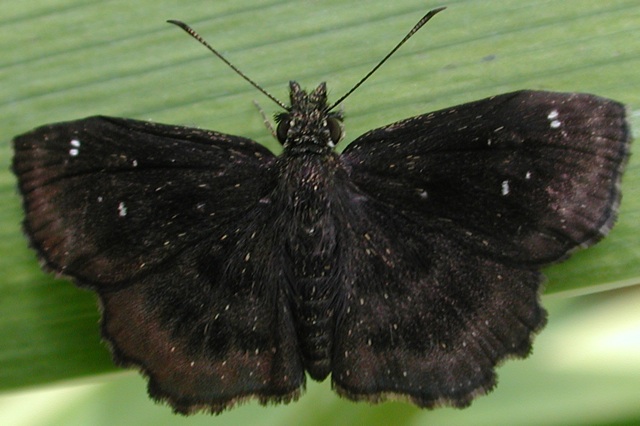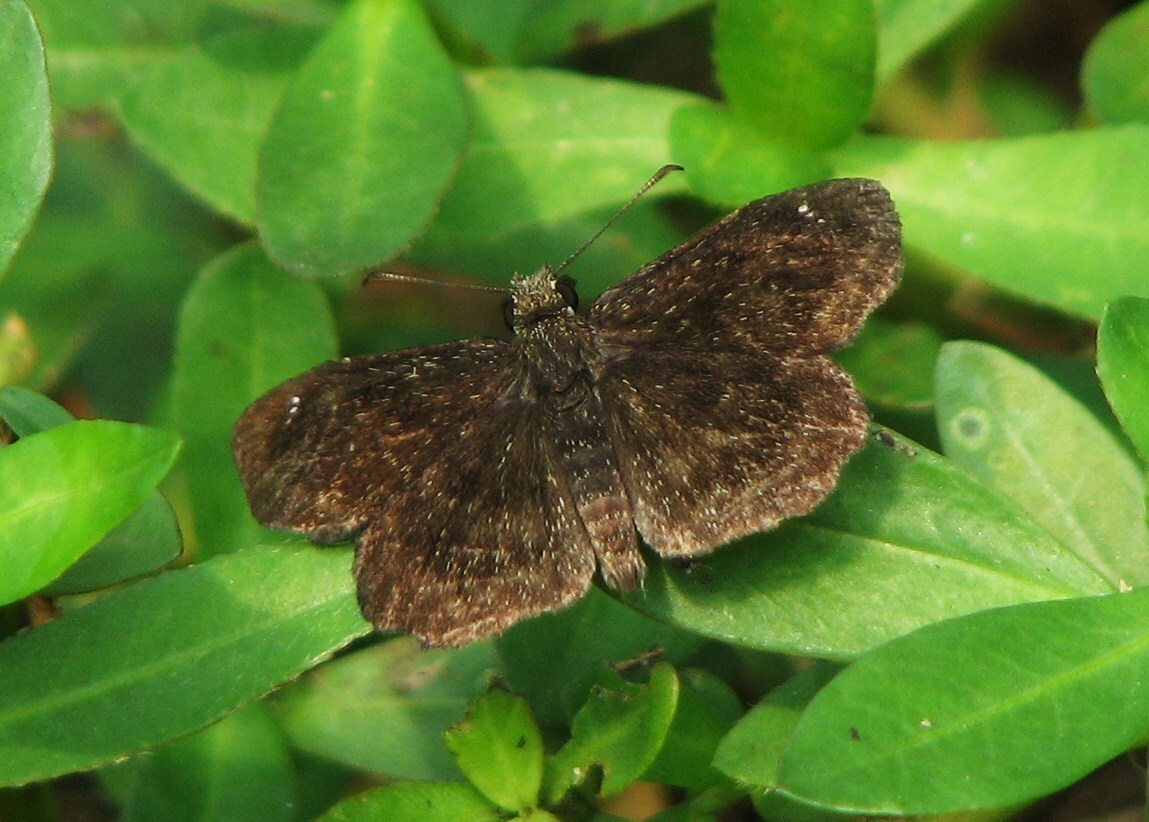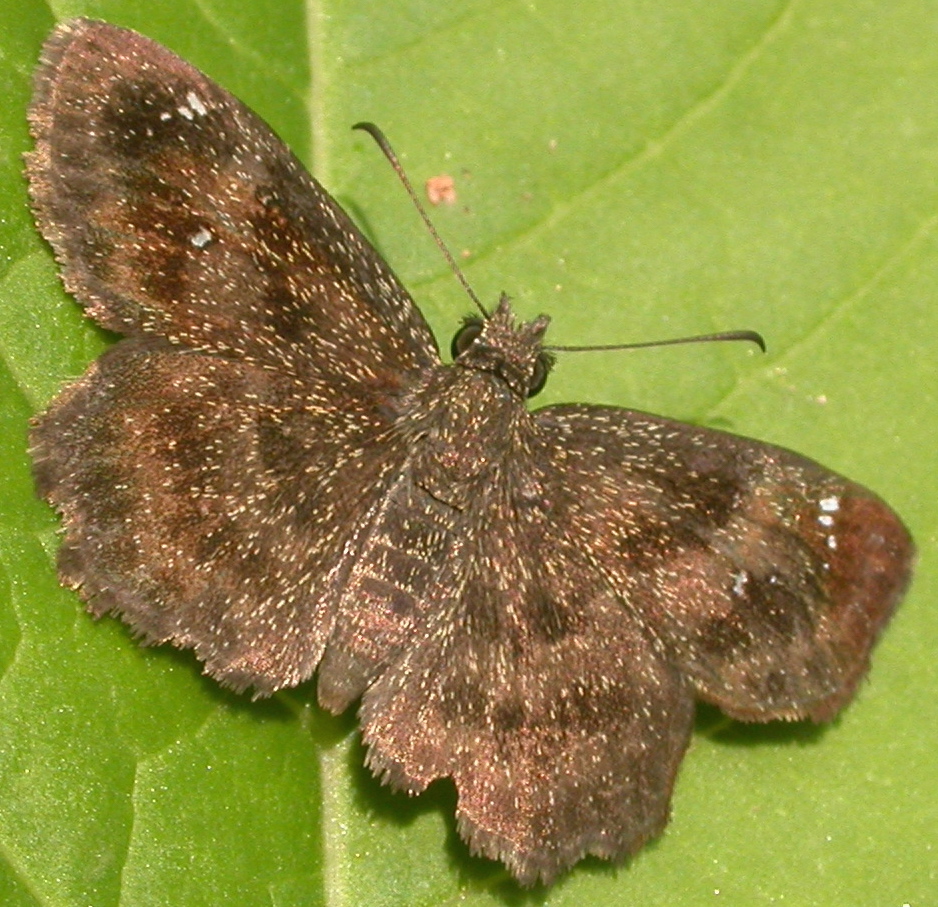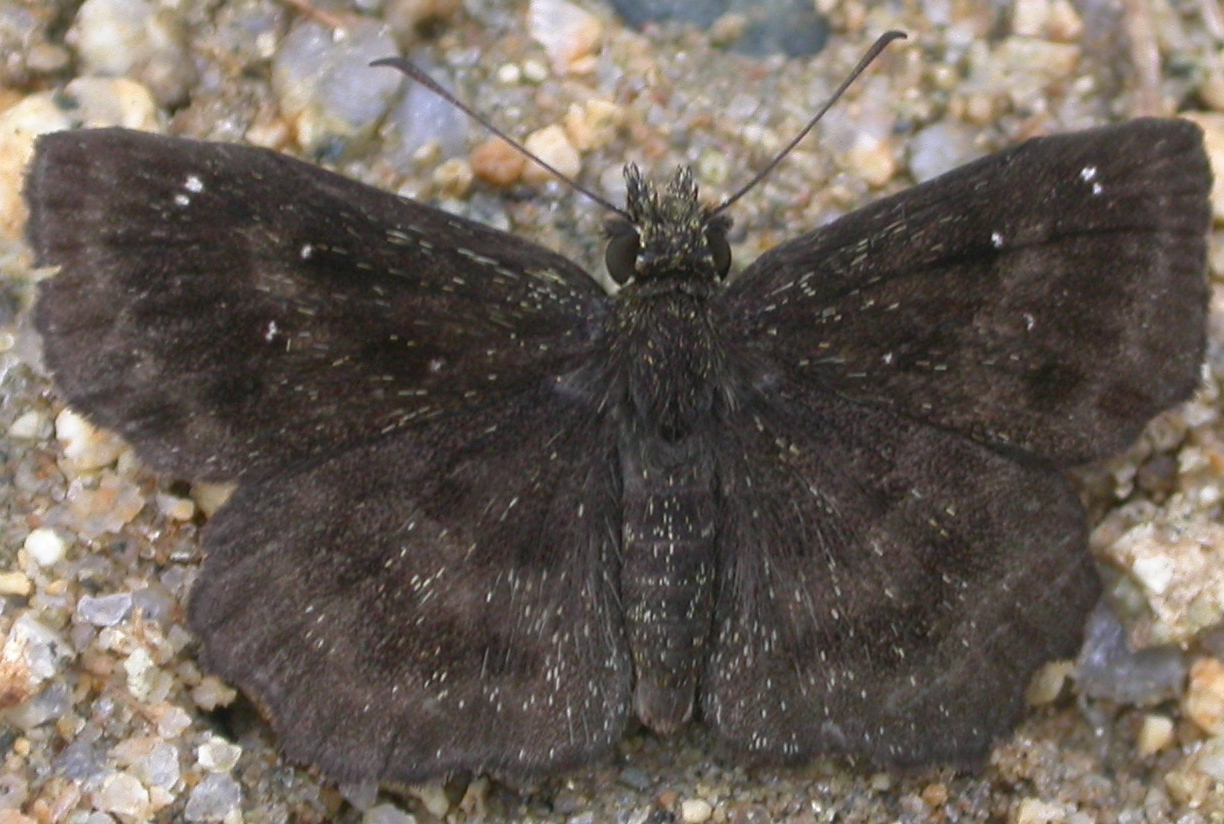|
| Common Name | Hayhurst's Scallopwing by Bryan Pfeiffer => Cliffs of the Neuse State Park, Photo used by permission. Bryan@VermontBirdTours.com
[View PDF]
 Click to enlarge Click to enlarge
[Google Images] GBIF [Global Distribution ] BoA [Images ] iNaturalist |
| Scientific Name | Staphylus hayhurstii
|
| Link to BAMONA species account. |
| Map | Click on a county for list of all database records for the species in that county.
 |
| Distribution | DISTRIBUTION: Scattered throughout the Coastal Plain and Piedmont, but only recorded from two Mountain counties (Buncombe and Madison). Found along the Outer Banks. Seemingly very rare to absent over nearly all of the Mountain region, though the species was "re-discovered" in Buncombe County in 2009. In the Mountains, it is likely limited to low elevations (below 2500 feet).
|
| Abundance | ABUNDANCE: Rare to locally uncommon; quite colonial. However, once a colony is found, it may be seen in small numbers (four or more). Abundance pattern across the state is poorly known, other than obviously very rare to locally absent in the Mountains. This species' apparent scarcity is a mystery, but it is a small butterfly that could easily be overlooked.
|
| Flight | FLIGHT PERIOD: Three broods downstate, with the second and third "run together." A small brood from mid-April to early June, a much larger brood from mid-June to early August, and a third from mid-August into September. There might be just two broods in the Mountains; broods appear to be from the latter half of April to mid-June, and from early July to early September.
|
| Habitat | HABITAT: Generally in somewhat disturbed areas, usually where damp and semi-shaded, such as along moist woodland edges, vacant lots, gardens, and so forth. For such a "scarce" butterfly, it has a surprising tendency to appear in gardens, particularly near moist woods. Away from gardens, it is best to look for it along the edges of moist woods, such as along margins of roads passing through bottomlands or alongside a greenway in a sewerline clearing.
|
|
| | Plants | FOOD AND NECTAR PLANTS: The foodplants are Lamb's-quarters (Chenopodium album) and other weedy species in the amaranth family (Amaranthaceae) and the goosefoot family (Chenopodiaceae). The species nectars on a variety of flowers, usually those very close to the ground.
|
| Comments | COMMENTS: I do not understand why this is such a scarce butterfly, not only in NC but over much of the Eastern United States. Its foodplants are abundant in weedy or disturbed places, and its habitats include gardens and vacant lots. Admittedly, these latter habitats are overlooked by most butterfliers, but still, this species is seldom encountered. You are doing well to see it just once per year. Gail Lankford and others found the species on three dates in August 2009 in Buncombe County, to re-confirm the species' seemingly precarious existence in the Mountains, where we assume it occurs only at low elevations (below 2500 feet). Four more records from the county were made in 2010, and a remarkable 12 records came from that county in 2011. In 2012, six counties reported the species for the first time, including Madison in the Mountain province.
|
State Rank | S4 | | State Status | |
Global Rank | G5 | | Federal Status | |
| Synonym |
|
| Other Name | Scalloped Sooty Wing, Hayhurst's Sootywing
|
|
|

 >>
>>



